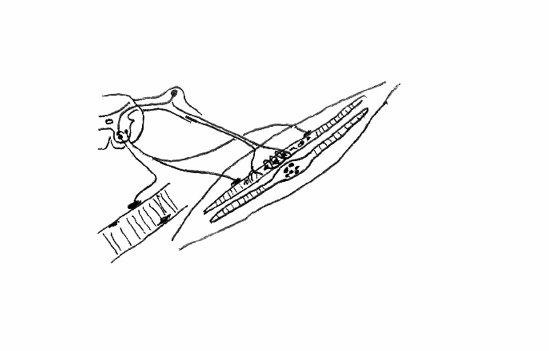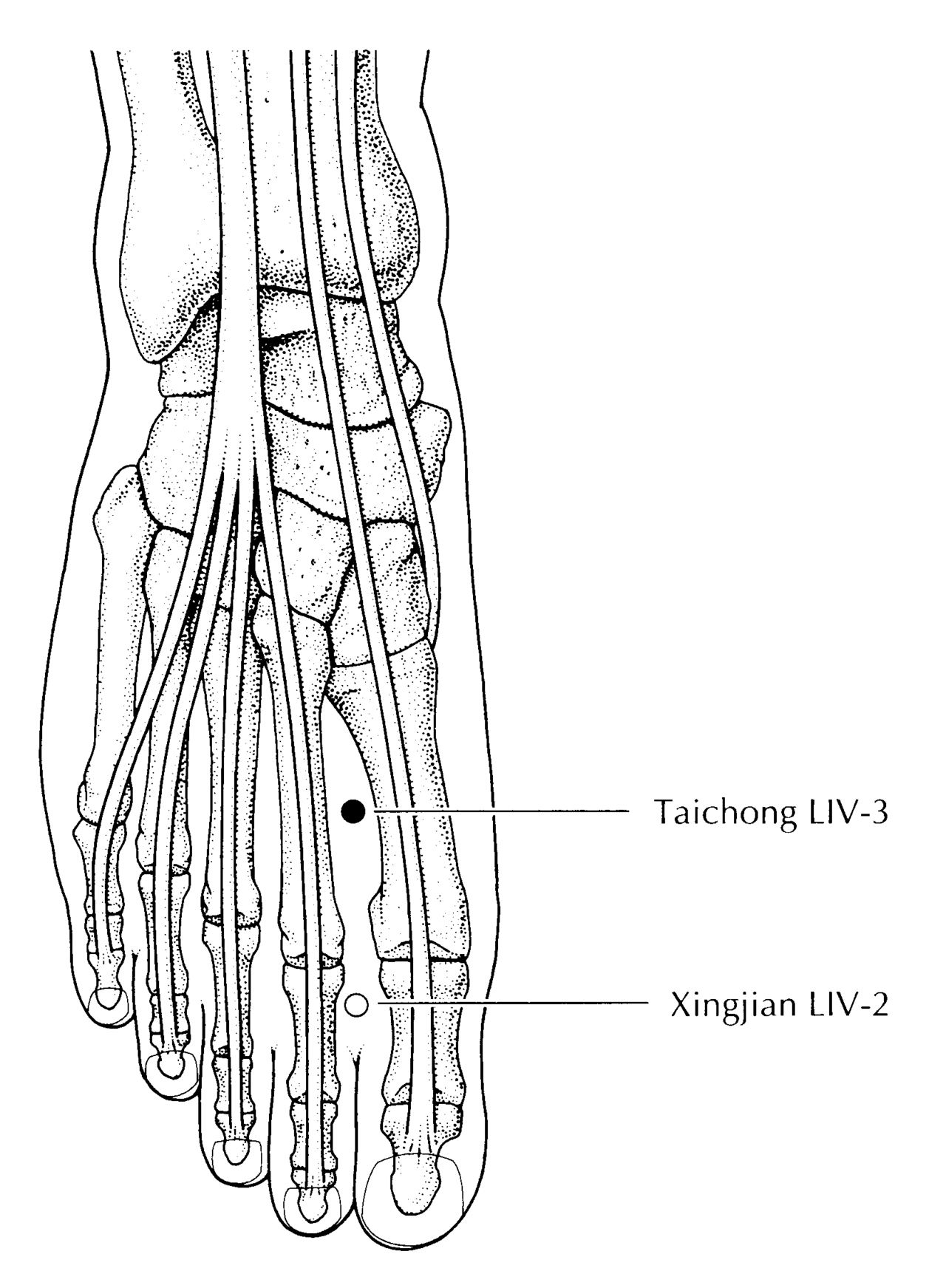One point and 1 treatment can profoundly influence gait
When talking about the lower extremity and gait (as I have been know to do at more that one seminar), I often talk about the “reverse engineering” principle. This is looking at a muscle or muscle group from a “ground up” perspective, as it would be functioning during the gait cycle. This, along with knowing when a muscle should be firing in the gait cycle, can provide clues to what may be going on and how you may be able to help.
When discussing the quads, we often employ this principle. It can be a little difficult to think of the vastus medialis as a lateral rotator of the thigh and the rectus femoris as a flexor (anterior nutator) of the pelvis, but if you put your foot on the ground and think about it, you will see what I mean.
The VMO is often implicated in patello femoral syndromes but cannot be selectively activated. The ratio between vastus medialis and vastus lateralis does seem to be alterable and perhaps is a siginificant factor.
How about if we look at the vastus lateralis instead?
The vastus lateralis is the largest and most powerful portion of the quadriceps. One paper reports that the muscle volume of the the vastus lateralis was 674 cm3 followed by the vastus intermedius at 580 cm3, vastus medialis 461 cm3 and lowest in the rectus femoris 339 cm3. This makes the vastus lateralis is twice the volume of the rectus femoris!
Studies of muscle fiber orientation show that VL force component is directed approximately 12-15° laterally with respect to the longitudinal axis of the femoral shaft. This would mean it has a tremendous mechanical advantage and could (should?) pull the patella directly laterally compared to the VMO force, whose component is directed approximately 55 ° medially. The muscle “balance” between the VMO and the VL, along with the periarticular soft tissue structures acting on the patella, is considered major component in the control of normal patellar alignment and function. The VL is often considered to be the “overactive” one by many clinicians, particularly in cases of patellofemoral dysfunction. It turns out that from an EMG standpoint, they may be correct.
The vastus lateralis arises posteriorly from the femur along the linea aspera and circumnavigates the thigh in a counterclockwise fashion to attach laterally to the patellar tendon. Because of its size and fiber orientation, it would stand to reason that needling it would have more cortical representation than say the vastus medialis.
There is an interesting paper where they needled a single acupuncture point: Stomach 34. For those who haven’t studied acupuncture (or don’t remember) this point is located on the thigh, in a small depression about 2.5 inches (63 mm for the metric folks) lateral to and above lateral border of the patella. In other words, it is in the vastus lateralis (see above).
The results showed statistically significant improvement in velocity, cadence, stride length, cycle time, step time and single/double leg support after treatment. The effect was small, but positive.
Think about where the trigger points are for this muscle (see above) ; fairly close to this point, sometimes (depending on the trigger point), even directly over this point. Needling has many effects on muscle and its trigger points and we like to think that needling “normalizes” function of a muscle; perhaps it influences the apparent “dominance” of this muscle and allows the patella to track more medially?
So, in this popultion of patients of elderly individuals, 1 acupuncture (needling) treatment had a positive influence on their gait. Perhaps if the folks in the knee study were treated a few more times, we would have seen a change. Imagine what could have happened if aditional treatment modalities, like exercise, proprioceptive work and gait retraining were added!
What a great, cost effective alternative or addition to your rehabilitation this could be. Consider adding this modality (and point!) to your current clinical toolbox, not only for older patients but for any patients that may have a gait abnormality.
https://tmblr.co/ZrRYjx24ecKUx
Boucher JP, King MA, Lefebvre R, Pépin A. “Quadriceps femoris muscle activity in patellofemoral pain syndrome.” Am J Sports Med. 1992 Sep-Oct;20(5):527-32. Web. 17 Nov 2012.
Souza DR, Gross MT. “Comparison of vastus medialis obliquus: vastus lateralis muscle integrated electromyographic ratios between healthy subjects and patients with patellofemoral pain.” Phys Ther. 1991 Apr;71(4):310-6. Web. 25 Nov 2012.
Cowan SM, Bennell KL, Crossley KM, Hodges PW, McConnell J. “Physical therapy alters recruitment of the vasti in patellofemoral pain syndrome.” Med Sci Sports Exerc. 2002 Dec;34(12):1879-85. Web. 26 Nov 2012.
Boling MC, Bolgla LA, Mattacola CG, Uhl TL, Hosey RG. “Outcomes of a weight-bearing rehabilitation program for patients diagnosed with patellofemoral pain syndrome.” Arch Phys Med Rehabil. 2006 Nov;87(11):1428-35
Kim, H. H., & Song, C. H. (2010). Effects of knee and foot position on EMGactivity and ratio of the vastus medialis oblique and vastus lateralis during squatexercise. Journal of Muscle and Joint Health, 17(2), 142-150.
Lam, P. L., & Ng, G. Y. (2001). Activation of the quadriceps muscle during semisquatting with different hip and knee positions in patients with anterior knee pain. American Journal of Physical Medicine & Rehabilitation, 80(11), 804-808.
Erskine, R. M., Jones, D. A., Maganaris, C. N., & Degens, H. (2009). In vivo specific tension of the human quadriceps muscle. European journal of applied physiology, 106(6), 827-838. [PubMed]
Grabiner MD: Current Issues in Biomechanics (9th ed). Champaign, Human Kinetics Publishers, 1993.
http://www.orthobullets.com/anatomy/10058/vastus-lateralis
Hauer K, Wendt I, Schwenk M, Rohr C, Oster P, Greten J. Stimulation of acupoint ST-34 acutely improves gait performance in geriatric patients during rehabilitation: A randomized controlled trial. Arch Phys Med Rehabil. 2011 Jan;92(1):7-14. doi: 10.1016/j.apmr.2010.09.023.
Peter Deadman, Mazin Al-Khafaji, Kevin Baker: A Manual of Acupuncture (2nd Edition) Journal of Chinese Medicine Esat Sussex, England 2007
Travell JG, Simons DG. Myofascial Pain and Dysfunction: The Trigger Point Manual: The Lower Extremities. Vol.2 . Baltimore, Md: Williams & Wilkins;1992
http://www.medscape.org/viewarticle/521494_3






































